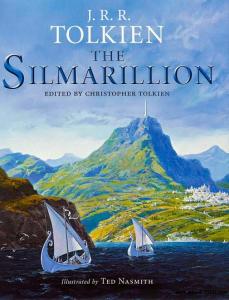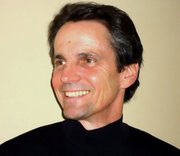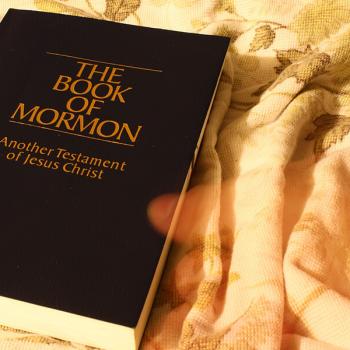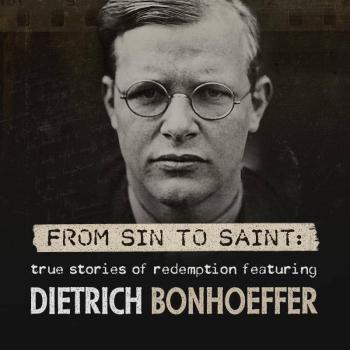by T. M. Doran
By all accounts, a tiny fraction of those who have read or viewed The Hobbit and The Lord of The Rings (LOTR) have been able to plow through The Silmarillion (Houghton Mifflin, 1977) assembled by J.R.R. Tolkien’s son, Christopher, after his father’s death.
Encompassing eons of time, dense with mythology and archaic language, reading like a historical narrative in places, identifying three-four-five different names for people and places, the book is hard work, especially the first time through. And because The Silmarillion can be hard work, the deeper themes in the chronicle can easily get lost in the fog of elves, dwarves, and monsters.
Alas, my first edition hardcover is not a collectible, having been read, referenced, hand-annotated, and dog-eared many times.
It’s been observed that religion is absent from The LOTR, but one of the most prominent themes in “The Silmarillion” is theological, not so much expressed as depicted in events, starting with creation, and in the choices and actions of characters.
This article is not intended to be an exploration of J.R.R. Tolkien’s religious beliefs but of the theological speculations that are depicted in the book that Christopher Tolkien compiled from his father’s resource material. Why didn’t Tolkien senior publish this work in his lifetime? Because he had decided he wasn’t fit enough at a later age to do everything he deemed necessary to complete a chronicle of the ages that preceded The LOTR.
Early in The Silmarillion, we find angelic beings (The Ainur) assisting their Creator (Ilúvatar) with the Divine Music that brings the physical universe into existence. Here, the powerful theological theme—radical freedom—is first introduced.
The Creator’s angelic beings aren’t passive observers but are invited to be active participants in the creation event. When Melkor—Tolkien’s Lucifer—adds discordant notes to the creation music, the Creator does not eliminate those rebellious notes; rather, allowing them to remain and then introducing melodies that bring new and unexpected beauty out of those discordant notes.
Some of the angelic beings remain with the Creator outside of physical creation, other loyal angels (the Valar) clad themselves in earthly raiment and tie themselves to the physical world so as to nurture creation, and a rebellious band, led by Melkor (in those ages, The LOTR’s Sauron is his captain), tie themselves to the physical world to dominate and rule it.
Those angelic beings that tied themselves to the physical world can be likened to the gods of ancient Earth with the significant difference that they are all creatures. Nonetheless, “it was then the delight of the Valar…to clothe themselves as in a vesture in the forms of the Children of Ilúvatar (elves and mortals), so also did they eat and drink…For he (Melkor) was yet as one of the Valar, and could change his form, or walk unclad, as could his brethren…”
The world described in The Silmarillion has an advanced physics feel to it, as if extra dimensions were lurking in the background and forces and creatures could be acquired from outside the physical world.
The angelic beings—the Valar and Melkor’s rebels—learn that the Creator intends for two races of “Children” to abide in this physical world: the firstborn elves and mortal men and women. In the eventide of their residence in Middle-earth, elves in The Hobbit and The LOTR are largely a race unto themselves.
In The Silmarillion, the elven “bridge race” allows readers to better understand the angelic beings with whom many of the elves abide and mortals with whom the elves in Middle-earth cooperate and contend. In the elves, we see a race not subject to aging or disease as mortals are, though possessing less power than the Valar.
And though elves are immortal, they are subject to human-like passions and their immortality takes a heavy toll as ages pass. It may seem odd to witness the union of an angelic being and an elf, or the union of an elf and a mortal but perhaps this is Tolkien’s way of reinforcing that for all their differences the Valar and the Children are creatures, from the highest angel to the humblest mortal.
The Creator bestows the gift of freedom on angels, elves, and mortals to the extent of permitting the disordered use of freedom to mar creation. You might say the big theological idea in The Silmarillion is the Creator’s willed vulnerability to his creatures.
Is the purpose of this gift of freedom to foster super-natural trust so that such trust might grow into super-natural love? Is the purpose of freedom, super-natural trust and love, to partake to the greatest possible degree in the Divine Life? Heroic examples in The Silmarillion suggest as much.
For all his power over the physical world, Melkor lives a cramped sub-natural life because he abuses freedom and rejects trust and love. So too, to a lesser degree, does the most gifted of the elven race, the maker of the Silmarils who names Melkor Morgoth—“The Back Foe of the World,” along with those who swear fealty to this gifted elf in opposition to the Valar.
What follows is betrayal and the sundering of father from son and kin-slaying and an age of misery. The Creator’s gift of freedom is emulated by the Valar in the matter of the calamitous departure of many of the elves from the blessed realm.
“And Manwë was grieved, but he watched and said no word. The Valar had brought the Eldar (elves) to their land freely, to dwell or to depart; and though they might judge departure to be folly, they might not restrain them from it.”
How disordered freedom affects other creatures is eloquently depicted by Tolkien in the figure of the human chieftain, Húrin, and his family. Húrin is captured by Melkor and tortured physically and spiritually.
In The Tale of the Children of Húrin (Houghton Mifflin, 2007), also edited by Christopher Tolkien, an expanded version of the same tale in The Silmarillion, Melkor lies to Húrin: “For beyond the Circles of the World there is Nothing. But within them they (Húrin’s family) shall not escape me, until they enter into Nothing.”
Húrin is the just man unjustly assailed by evil. The contest of minds and wills between Húrin and Melkor is one of Tolkien’s most masterful depictions of the humanly-incomprehensible mystery of evil, a mystery that cannot be intellectually deciphered and must ultimately rely on trust and love.
Even the choices of loyal Valar contribute to the suffering of elves and men; the ill-considered release of Melkor from bondage; the choice of Aulë, one of the Valar, to create the dwarves prior to the “birth” of the Children of Ilúvatar.
Though Aulë had erred in this act, because he had acted out of love, Ilúvatar blessed the dwarves and allowed them to live. In contrast is Melkor’s creation of orcs and other destructive creatures as tools to further his will to rule, and in mockery of the Creator and his work.
Tolkien seems to be saying that freedom is inextricably linked to sharing in the Divine Life or rejecting that Life, that the peril that accompanies freedom is worth the reward for those who persevere in trust and love:
“It is one with this gift of freedom that the Children of Men dwell only a short space in the world alive, and are not bound to it, and depart soon whither the Elves know not…Death is their fate, the gift of Ilúvatar, which as Time wears even the Powers shall envy.
“But Melkor has cast his shadow upon it, and confounded it with darkness, and brought forth evil out of good, and fear out of hope. Yet of old the Valar declared to the Elves in Valinor that Men shall join in the Second Music of the Ainur; whereas Ilúvatar has not revealed what he purposes for the Elves after the World’s end, and Melkor has not discovered it.”















